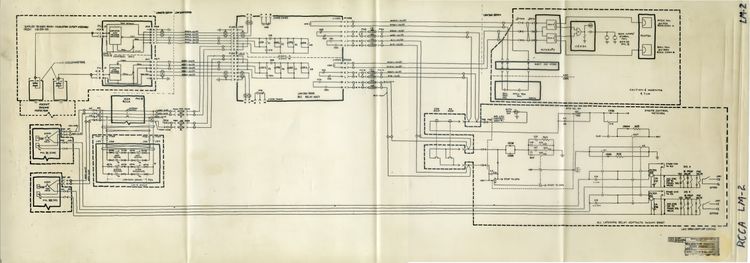First-Hand:Rough Combustion Cut-off Assembly for Lunar Module
By Bob Fitzgerald
I was a Systems Engineer on the Lunar Module at Grumman during the 1960’s. One of my unusual tasks involved the integration of the Rough Combustion Cut-off Assembly (RCCA) in the early LM’s. The RCCA evolved after testing of the Descend Engine indicated a potential hazard.
The Rough Combustion Cut-off Assembly, provided an indication of this hazard to the crew and shut down the engine if rough combustion was detected. Obviously, the engine was significantly modified prior to manned flight. In order to spread the job around, Bell was chosen for the ascent stage and Rocketdyne for the descent stage. Part of engine qual testing was to inject a small charge into the combustion chamber while the engine was running (probably at max thrust). The Rocketdyne began to go unstable, which is a precursor to a significant hazard.
The RCCA added accelerometers which were fastened to the combustion chamber. A small amplifier and a trigger circuit—set for the excessive vibration—would then sense the buildup of a wave front in the chamber. The engine was shut down immediately. (Because of the redundancy required for cockpit engine on/off control, the RCCA circuitry was designed override all single point failures.) Obviously the use of the initial Rocketdyne engine and the RCCA was not for lunar landing missions.
Since Bell had performed the same tests on their engine (even though it had less thrust), Bell was charged with developing a replacement chamber for the Rocketdyne engine. After all tests of the Bell/Rocketdyne engine, Lunar landing could proceed. I think that the Apollo 8 was probably the second manned flight that used the modified engine.
The RCCA was not installed on the Lunar Landing missions. (Neither was the initial Rocketdyne engine.) I’ve been told that LM-2 had the RCCA installed in it, but it was never flown and is now in Washington DC at the Air and Space Museum.
Side note: The Ascent Engine was installed in a rigid, fixed location (It uses its RCS jets for steering) whereas, the Descent stage engine was steerable via its gimbals mounting.
